Hofgut von Oeynhausen
Hille, Minden-Lübbecke, North Rhine-Westphalia, Germany
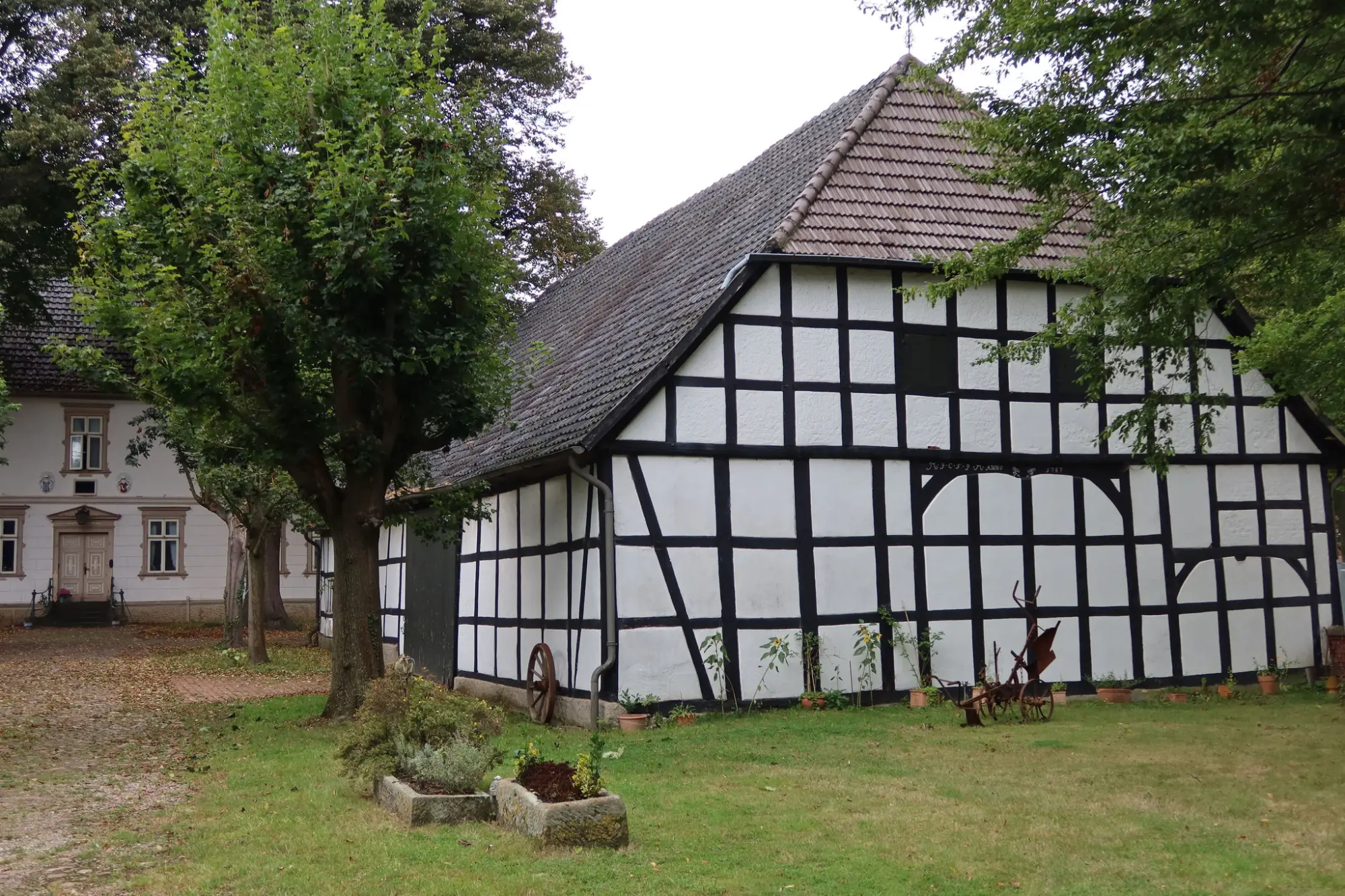
This farm in the heart of Hille village was owned by the von Voss family. In 1699, it was acquired by Colonel von Oeynhausen and his wife Susanna Pohlmann. It was then named the “von Oeynhausenscher Hof”. Colonel von Oeynhausen and Pohlmann were intimately familiar with Hille. In 1725, Susanna Pohlmann made a generous donation of an altar to the Hille church. Adorned with their family crest, the altar also features exquisite depictions of Christ and the Holy Communion. After Susanne von Oeynhausen’s death, the estate was passed to Christian Gottlieb Ludwig Pohlmann in 1728. His son, Major Christian Friedrich Pohlmann, died in 1781 at the age of 70. Through marriage, the farm was transferred to surveyor Karl Heinrich von der Heyde in 1829. In 1882, Friedrich Wilhelm Reimler became the owner of the farm, which is now known as “Reimlers Hof.” Today, the farm remains well-preserved and is listed as a heritage site.
Ugglansryd
Ryssby, Ljungby Municipality, Kronoberg County, Sweden
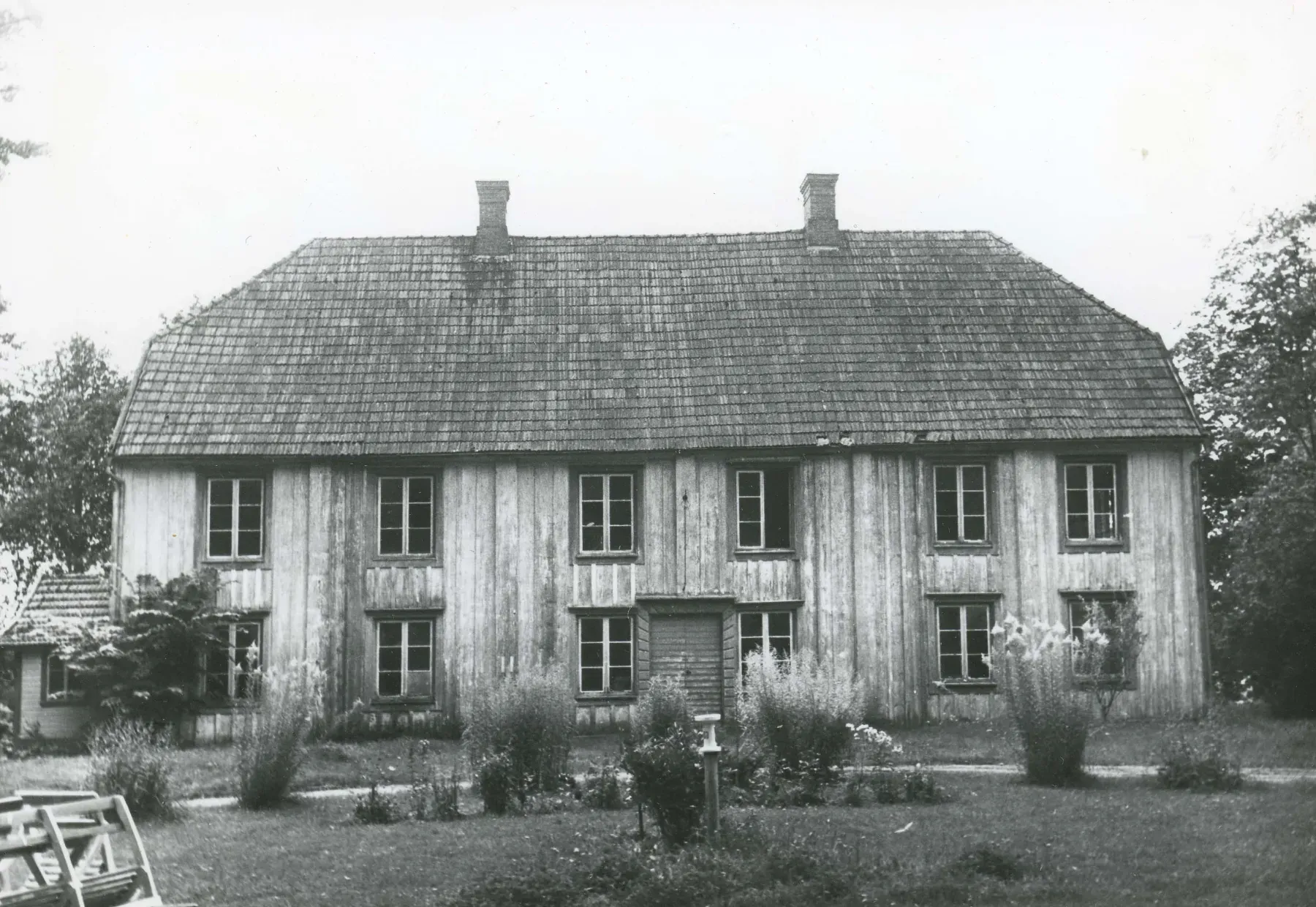
Originally a farm that was owned by the church during the Middle Ages, Ugglansryd passed to the Crown, and in the 1550s was in the possession of King Gustav Vasa. As early as 1559, the king leased the farm, first to Gunnar Galle the Elder and then to Galle’s brother Jöran Jonsson Galle, who converted it into a manor. Ugglansryd then passed to the Lilliesparre family, where it remained until 1623, coming into the ownership of Major Jöran Polman. Ugglansryd remained in the Påhlman family for at least 175 years, a place where generations lived and thrived. It was demolished in 1961, at which point Ryssby had lost one of its beautiful manor houses.
Ågården
Råda, Lidköping Municipality, Västra Götaland County, Sweden

Ågården has a long history, built in 1492 by Riksrädet Sigge Larson Sparre af Rossvik. It gradually came to members of the Krumme, Baät, Manesköld af Seglinge, Kafle and Kagg families. In 1746 the estate came to Major General and Governor Lorentz Christoffer Stobée, who died in 1756. His widow, Catharina Margareta Loos, remarried in 1762 to Court Marshal Axel Magnus Stiernsparre. He turned Ågården into a fideikommiss to be inherited by the family. He made the proviso that if the Stiernsparre family died out, which was to be expected, the new owners would be obliged to add the name Stiernsparre to their own name. Thus, a branch of the family is known as Påhlman-Stiernsparre.
Sunnerå
Ryssby, Ljungby Municipality, Kronoberg County, Sweden

Sunnerå is a manor house and small village located outside Ryssby. The remains of a medieval castle on Källarholmen in Sunnerå indicate the existence of a main farm at that time. The first recorded owner was the knight Knut Grundis. In 1445, he gave it as a gift to his wife, Birgitta Haraldsdotter (Snedbjälke). By 1467, ownership had passed to Gustav Olsson Stenbock, a knight and councilor, who sold it to Benkt Kaare that same year. Sunnerå was owned by Johan Påhlman from 1690 to 1693. It changed owners several times, but came into the Påhlman family once again in the late 18th century. Göran Stålhammar owned the manor for over 30 years, after which it passed to Johan Magnus Påhlman and his wife Margareta Helena Stålhammar, who owned Sunnerå from 1796 to 1797.
Väraboda
Ryssby, Ljungby Municipality, Kronoberg County, Sweden
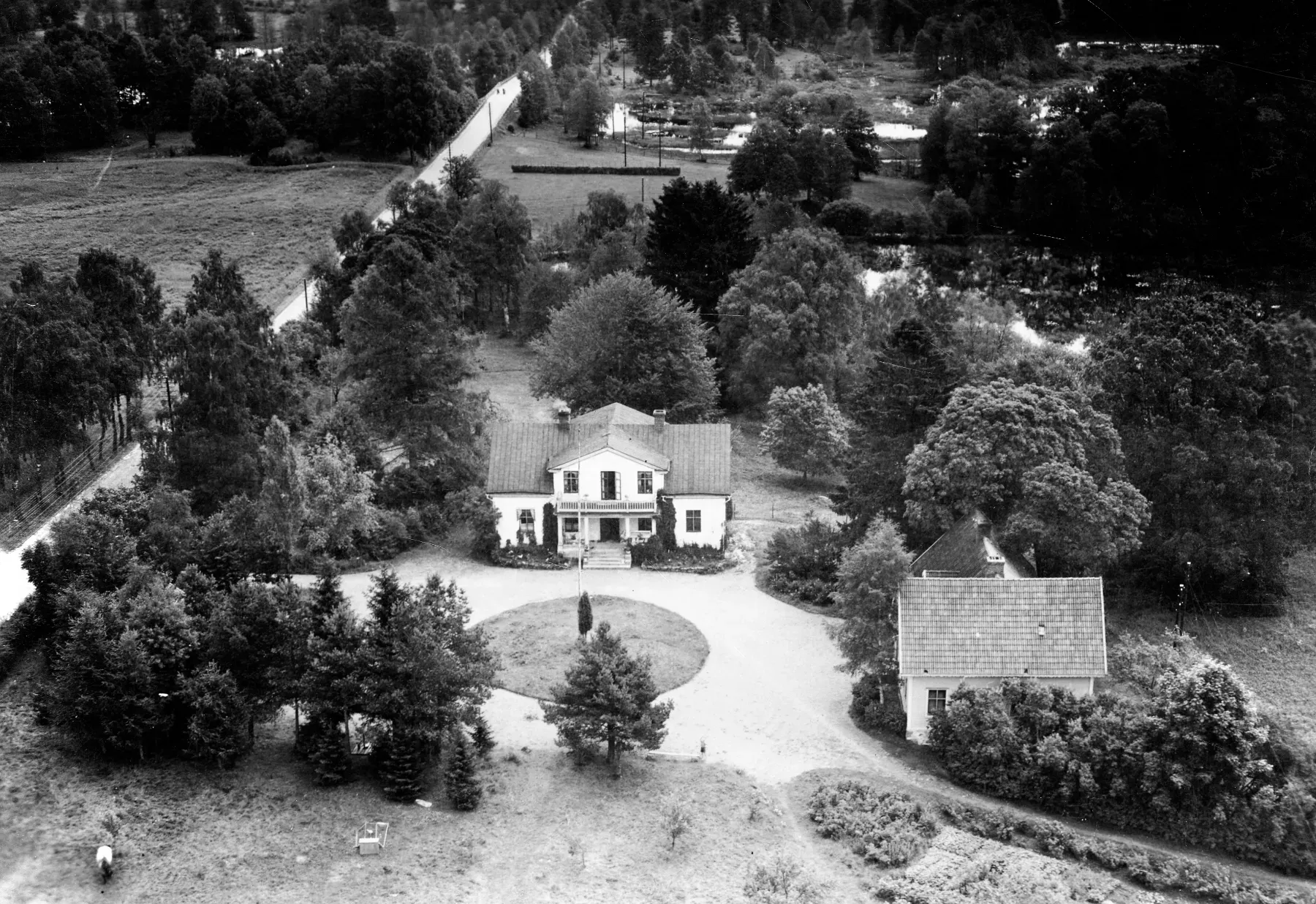
Väraboda manor in Ljungby is situated on the north-western side of Stensjön lake, diagonally opposite Ugglansyrd. It was acquired by the Lilliesparre af Fylleskog family in 1617 and later passed down to the Påhlmans, with noblewoman Anna Christina Påhlman owning it in 1652 and her brother Johan Påhlman inheriting it in 1677. The manor remained in the Påhlman family for over a century, likely due to its convenient location near the manor most associated with the family, Ugglansyrd. Carl Gustaf Påhlman owned the estate from 1716 to 1757 until his death, and his wife, Christina Elisabeth Renner, passed away at the manor in 1769.
Lilla Hindsekind
Hindsekind, Värnamo Municipality, Jönköping County, Sweden
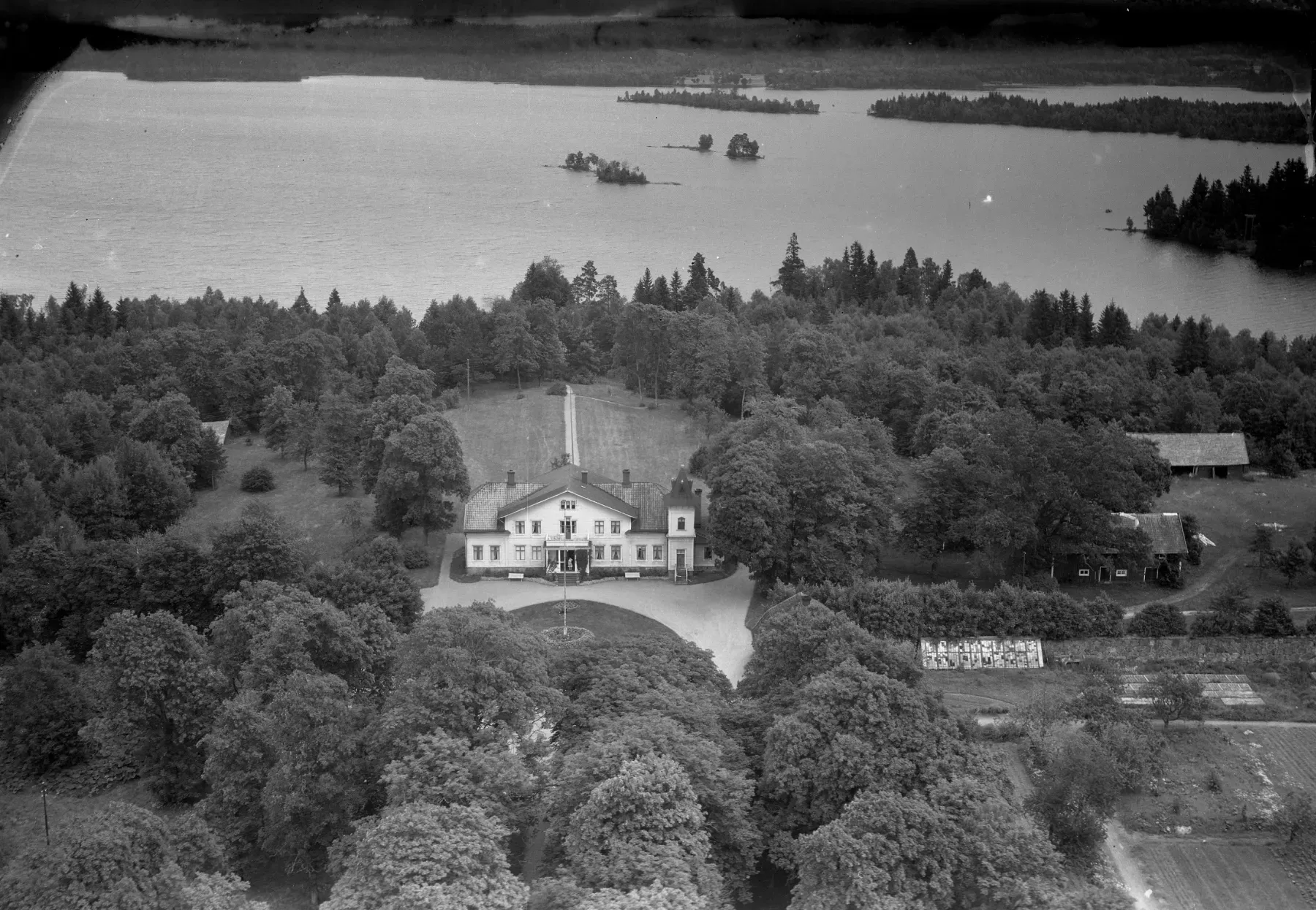
Near the lake Hindsen lies the very beautiful property, Hindsekind. It is partly located on the Näsudden projecting in Hindsen in the southern part of the riksintresse, or national interest. Hindsekind manor dates back to the 13th century and on Näsudden, there are remains of what is believed to be the ruins of a medieval castle, i.e. a defense facility with a strategic location. From the road, an avenue lined with large chestnut trees leads up to the manor. The main building was erected in 1798 and renovated and built in 1897 and restored in 1990. Hindsekind was owned in the 17th century by Count Gustaf Helmer Lillje, in 1686 by his widowed countess Anna Wachtmeister, in 1702 by her son-in-law Baron Johan Palmfelt and in 1748 by his heirs, all according to the land registers.
A smaller part of the property, called Lilla Hindsekind, came into the ownership of the Galle and Lilliesparre families, passing to Anna Christina and Johan Påhlman who owned it between 1660 and 1664.
Öötla mõis
Öötla village, Järva parish, Järva county, Estonia
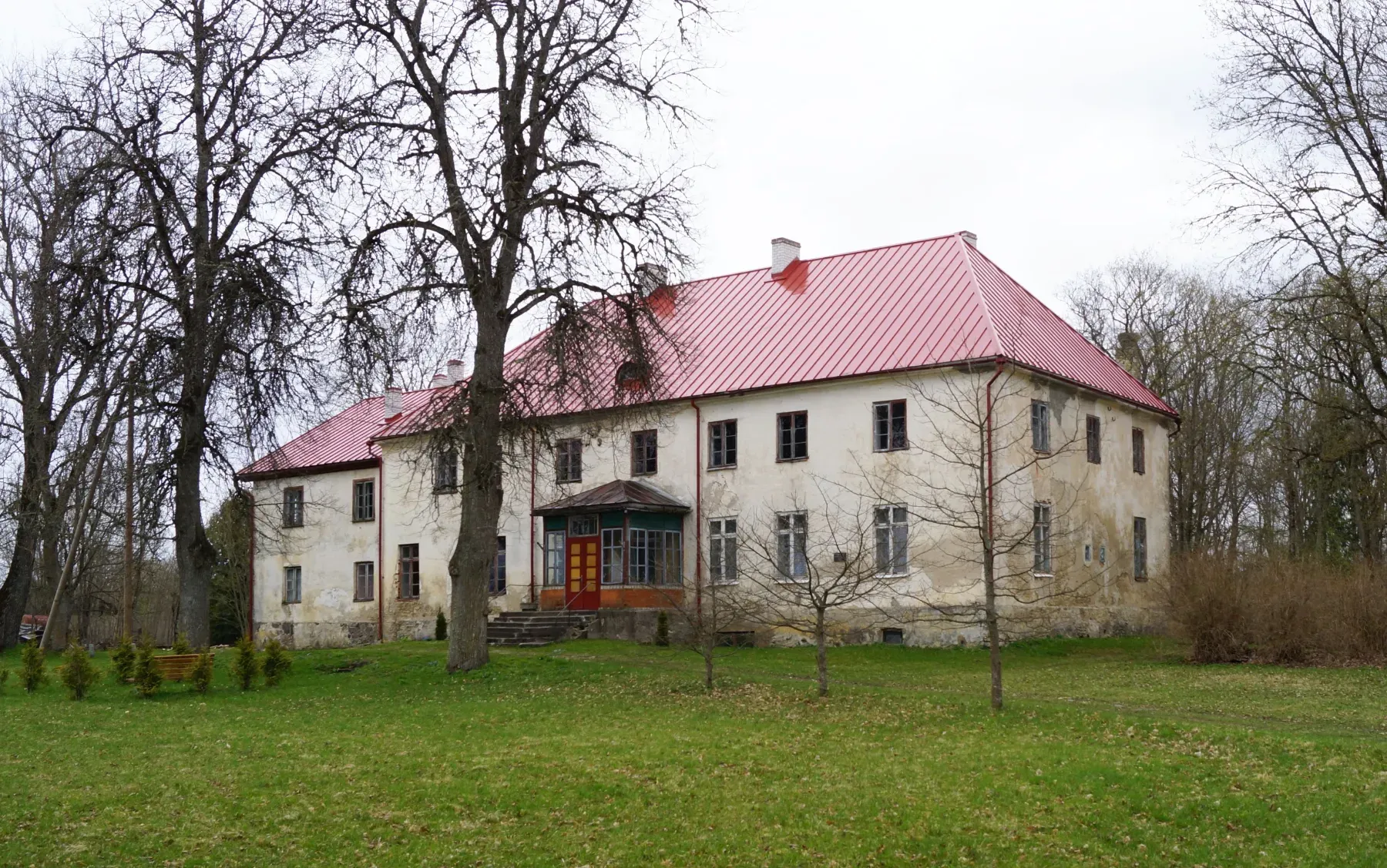
Öötla, also known as Oethel, has a rich history dating back to the 17th century. The estate changed hands numerous times throughout the years, starting with Jürgen Polman and remaining within the family for several generations. Notable owners include Hans von Drenteln, Hermann Adrian von Römer, and Johann Friedrich Pastelberger who bought the manor in 1750. After a short period, ownership returned to the Pohlmanns before being purchased by Nicolas Friedrich von Hagemann in 1774. The Stackelberg family went on to own Öötla for many years until it was finally transferred, with the last owner being Alexander von Stackelberg.
Kodila mõis
Kodila village, Rapla parish, Rapla county, Estonia
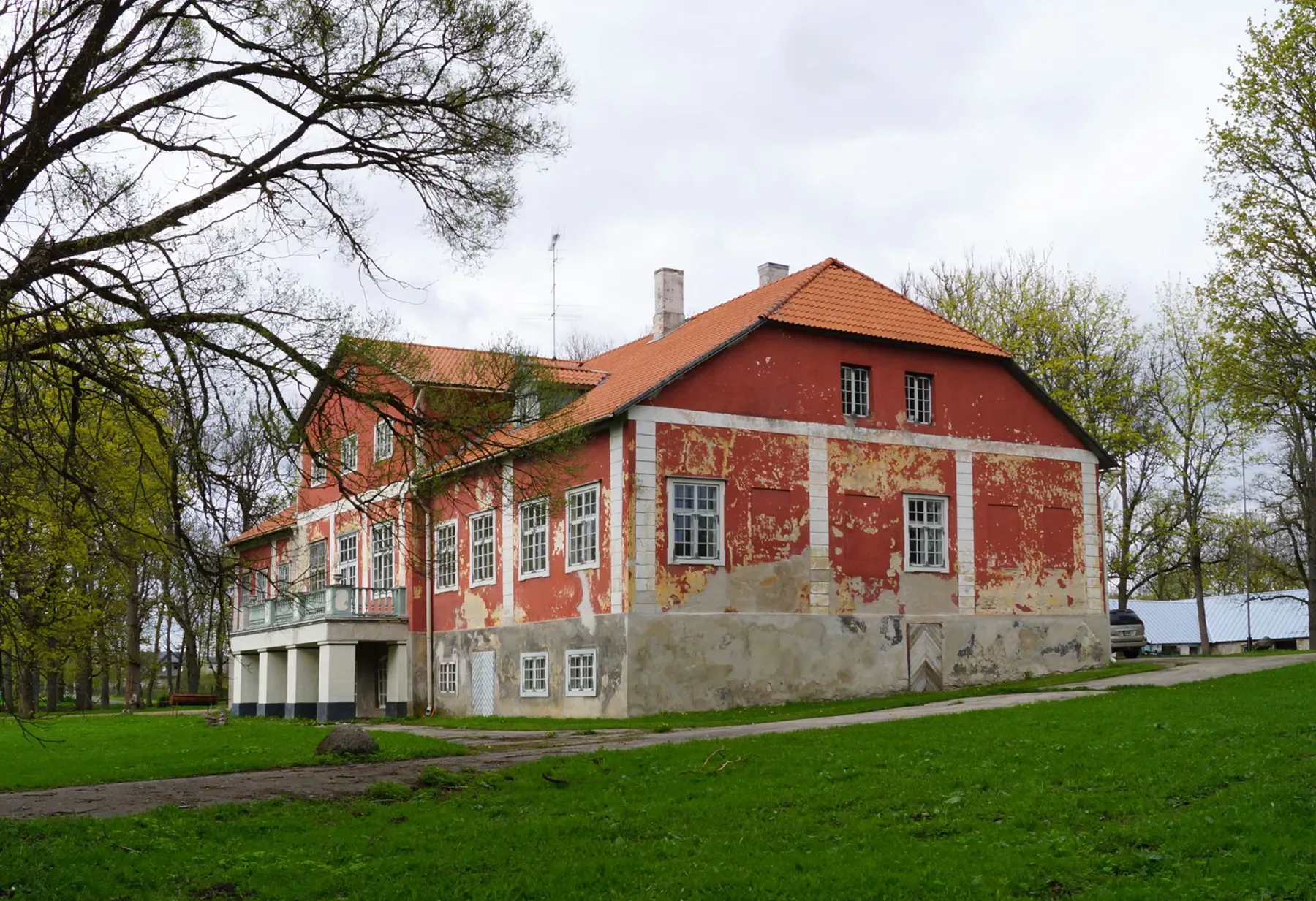
Kodila (German: Koddil) manor was first mentioned in 1436. It originally belonged to the Livonian Order and served as the country residence for the Tallinn Castle Commander. During the 16th and 17th centuries, the manor was owned by the von Nieroths. After the Northern War, it came under the ownership of the von Wrangells. In 1772, Reinhold Wilhelm von Pohlmann acquired Kodila and lived there until his death. The current main building of the manor is believed to have been constructed in the 1770s during von Pohlmann’s time. Throughout the 19th century, Kodila changed hands multiple times, being owned by the Pohlmanns, von Tiesenhausens, von Drögemüllers, Zimmermanns, the state, and the knighthood.
Tuudi mõis
Tuudi, Lihula parish, Lääne County, Estonia
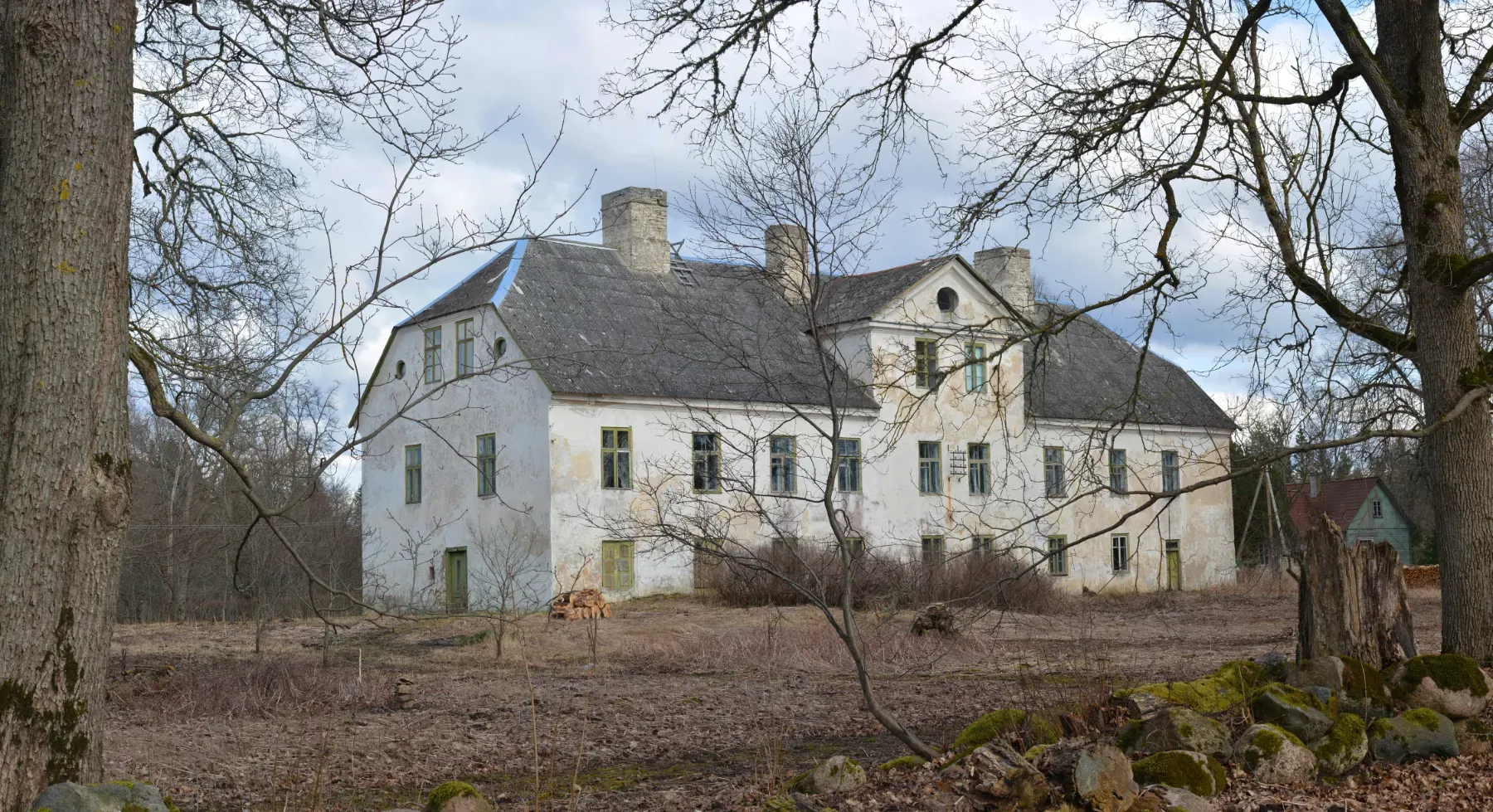
Tuudi, also known as Tuttomäggi, was originally established as a farmstead by Jacob von Lunden in a village located under Leal Castle, which was granted to him by King John III of Sweden in 1582. The heirs of Jacob von Lunden had the right to transfer ownership of the manor to Jürgen Polman, a privilege that was officially confirmed in 1616. Unfortunately, Jürgen Polman’s tenure on the property was short-lived. In 1627, either Jürgen himself or his son, Jöran, provided a report to the Royal Commission in Reval regarding the dwellings within the estate. However, despite their efforts, Jöran Polman’s request for a new letter of ownership for Tuudi, which had been eagerly sought after by his father, was denied. It eventually passed to Salomon Adam, whose family still owned it at the end of the 17th century.
Koluvere Castle (Lohde)
Koluvere, Väike-Maarja parish, Lääne County, Estonia
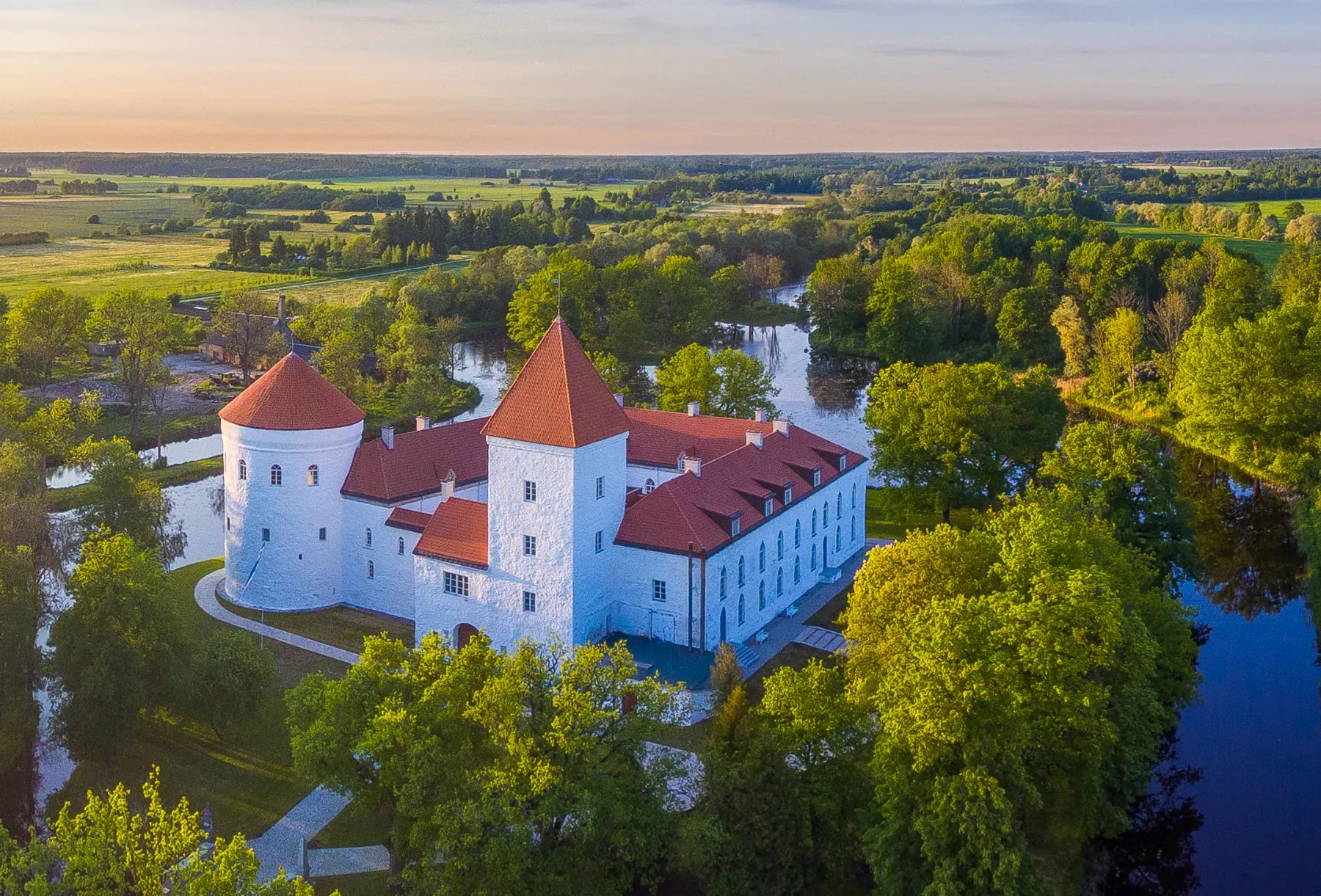
Koluvere Castle, located in Koluvere, Lääne, in western Estonia, is a medieval castle in Estonia that dates back to the 13th century. Originally known as Lohde, the castle has a rich history and has served various purposes over the years, from a fortress to a manor house. In the 18th century, Lohde was owned by Grigory Orlov, Catherine the Great’s ex-lover and close advisor. The estate was presented to Orlov in a signing ceremony held in St. Petersburg in 1771, with Reinhold Wilhelm von Pohlmann as a witness. After Orlov's death, Catherine II acquired the estate. In 1786, she used Lohde as a refuge for Duchess Augusta of Brunswick-Wolfenbüttel, seeking protection from her abusive husband. The Empress summoned von Pohlmann by imperial decree and entrusted him with the guardianship of Augusta and the keys to Lohde. To facilitate this arrangement, Lohde was transferred to von Pohlmann, who would manage the income and expenses of the estate. Tragically, the young duchess passed away at the castle under mysterious circumstances at the age of only 23.
The Winter House
44 Pikk tn, Tallinn, Harju County, Estonia
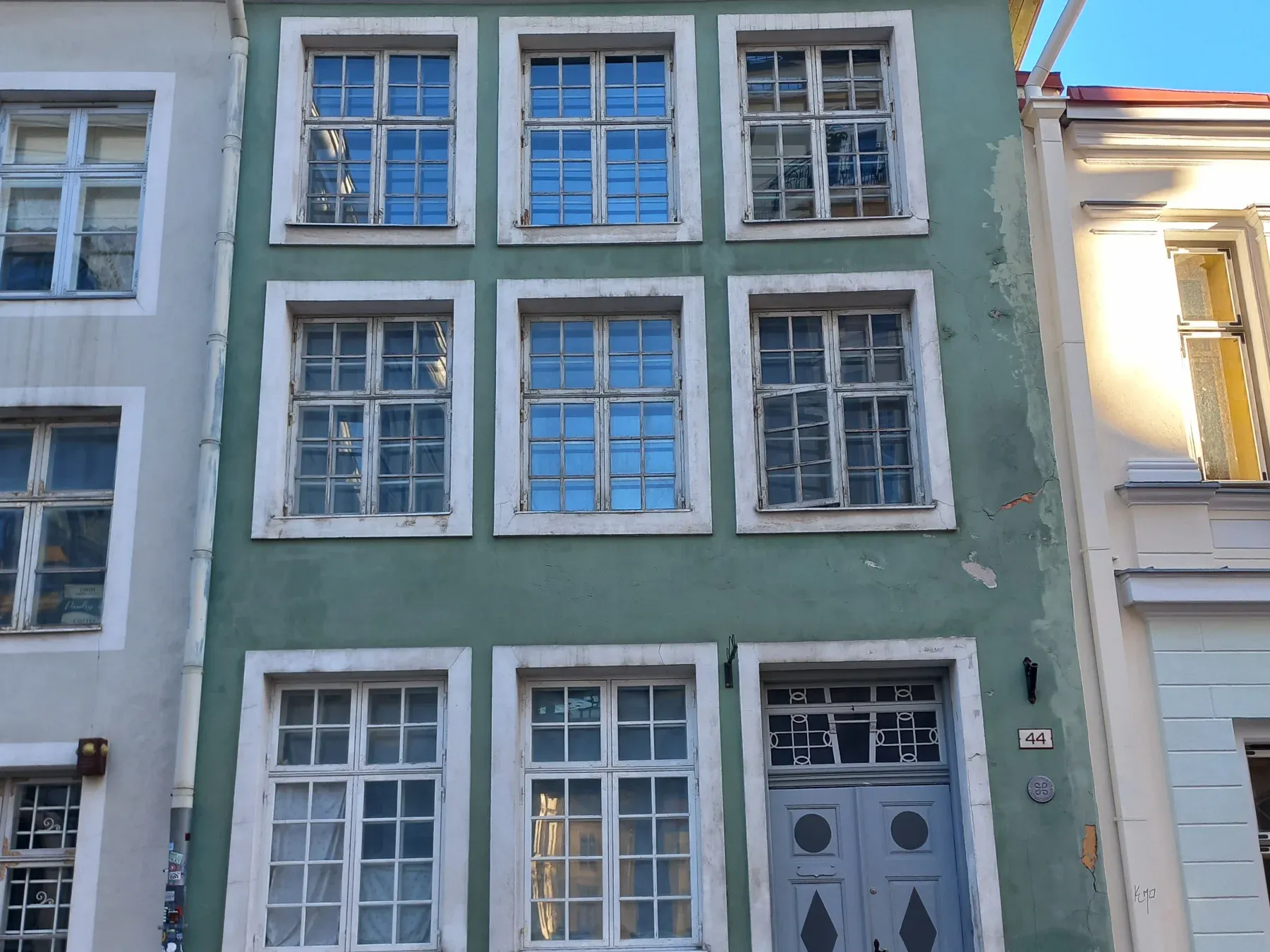
The medieval house on Pikk Street (previously known as Langstrasse) in Tallinn's Old Town has a history that stretches back to the Middle Ages. Originally built as a late Gothic merchant's residence, the house features a two-story basement, which is unusual for Tallinn. The earliest notices for the property date to 1401. In 1435, the house and yard are mentioned for the first time. In the 17th and 18th centuries, the building underwent significant renovations.
Before 1829, the house's medieval facade was completely redesigned. The new exterior adopted a more modest, classicist style, with a rhythm of windows and a half-gable roof. In the 1840s and 1850s, further renovations were made to the first floor, including a simplified design for the front door.
In the mid-18th century, the property was owned by Jägermeister Reinhold Wilhelm von Pohlmann. In 1787, his house was prepared for Duchess Augusta of Brunswick-Wolfenbüttel, who had been staying at Lodhe with von Pohlmann for her protection. This plan was orchestrated by Catherine the Great, a strategy to distance the Duchess from her abusive husband. Fearing for her safety and unable to return to St. Petersburg, the Duchess chose to remain in Estonia, spending summers at Lodhe and winters at the Tallinn house.
In 1789, the house was sold to Joachim Friedrich von Wrangell for 7,500 roubles.
Keila-Joa mõis
Keila-Joa, Lääne-Harju parish, Harju County, Estonia
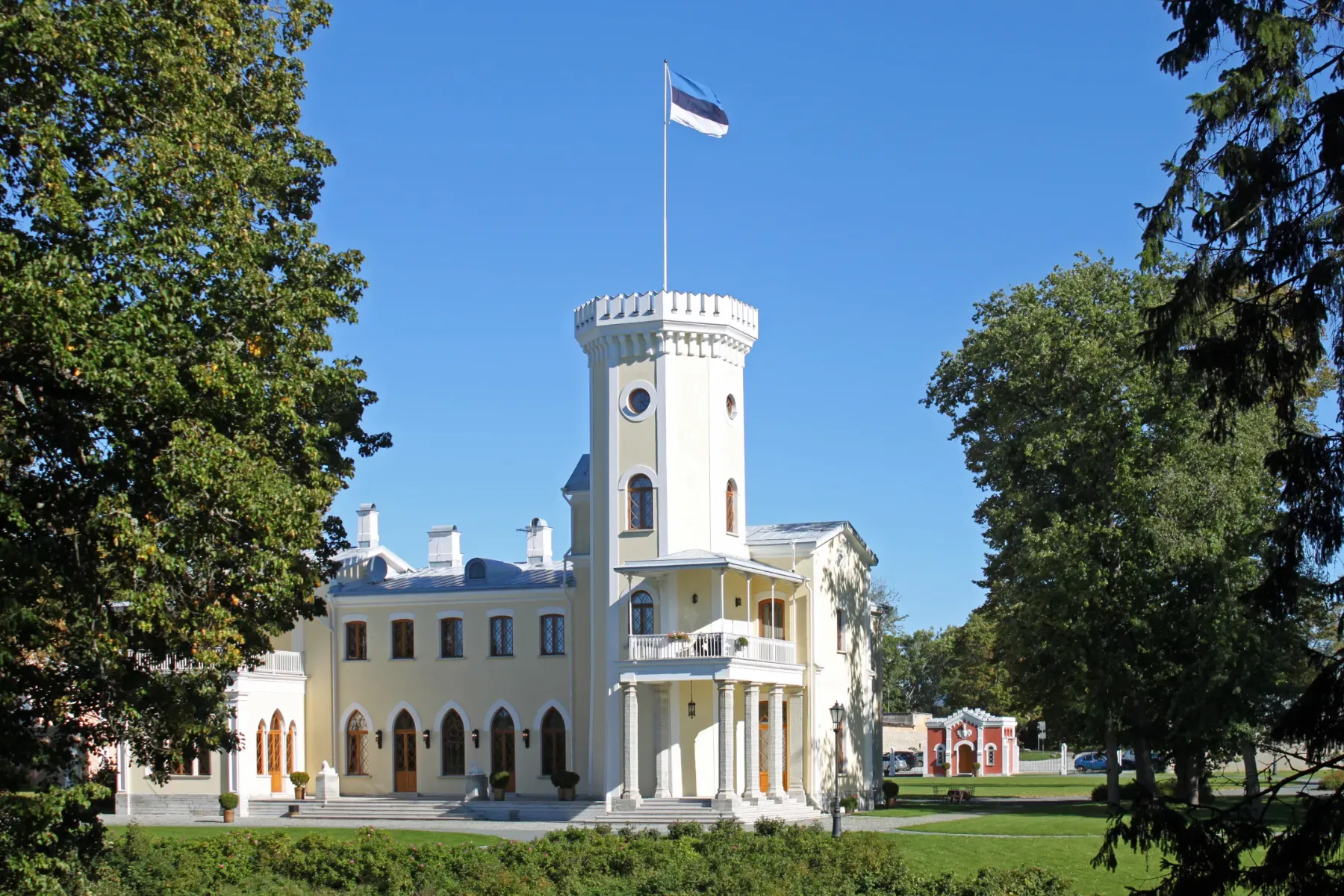
A water mill in Keila-Joa is mentioned as early as 1555, when it and the surrounding lands were lent to the Neukirch family by Heinrich von Galen (1480-1557), the master of the order. A first manor house was likely constructed in the 17th century. After 1641, ownership passed through various families, including the Baade, Wrangell, Tiesenhausen, von Dehn, von Pohlmann, and von Berg families. In 1809, Baroness Anna Christine von Pohlmann (née Fersen), the daughter-in-law of Lieutenant General Reinhold Wilhelm von Pohlmann, acquired the estate. Count Alexander von Benckendorff (1781–1844) purchased the estate in 1827 and passed it on to his daughter. It was owned by Prince Gregory Petrovich Volkonsky (1808–1882) married in 1838. With the associated estates Merremois and Käsaldas, which together formed a dominion, it remained in the family property of the princes Volkonski until 1920.
Sources:
- Vejde, Pehr Gunnar. Kronobergs Läns Herrgårdar : Historisk Översikt Jämte Ägarlängder. [Utg.Med Bidrag Från Längmanska Kulturfonden.]. Växjö, 1928.
- Almquist, Johan Axel. Frälsegodsen i Sverige under Storhetstiden : Med Särskild Hänsyn till Proveniens Och Säteribildning. Stockholm: LiberFörlag/Allmänna förl., 1931.
- Ulväng, Göran. n.d. Svenska Herrgårdar. Accessed July 4, 2024. https://www.svenskaherrgardar.se/.
- Rahvusarhiiv (The National Archives of Estonia). Kinnistute register. Accessed November 15, 2024. https://www.ra.ee/apps/kinnistud/index.php/
